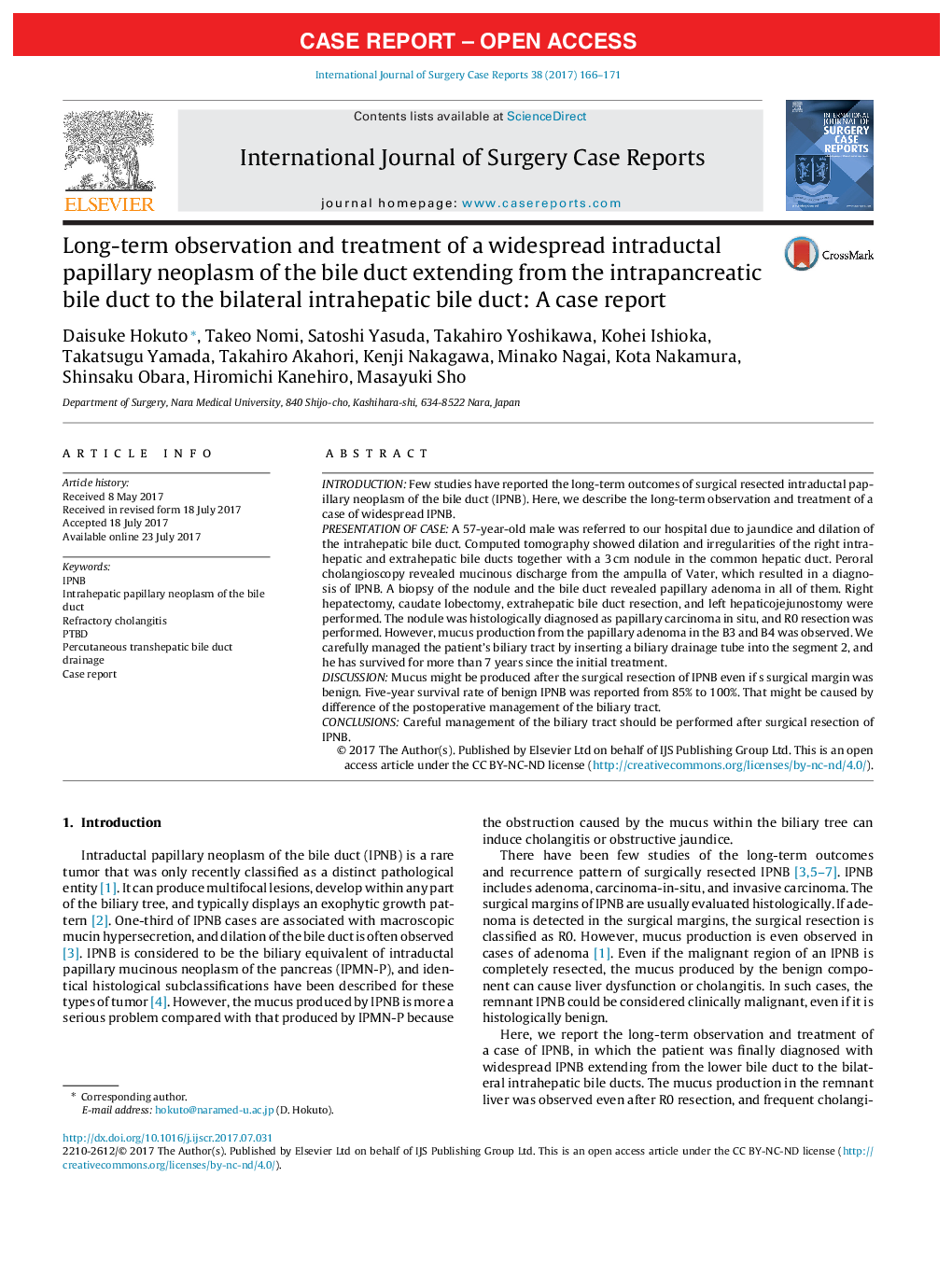| Article ID | Journal | Published Year | Pages | File Type |
|---|---|---|---|---|
| 5732551 | International Journal of Surgery Case Reports | 2017 | 6 Pages |
â¢There have been few studies of the long-term outcomes of surgically resected intraductal papillary neoplasm of the bile duct (IPNB).â¢Mucus might be produced even after the R0 resection of IPNB, and frequent cholangitis or jaundice might be occurred.â¢The biliary tract of the remnant liver after curative resection should be managed carefully for a long time after surgical resection.
IntroductionFew studies have reported the long-term outcomes of surgical resected intraductal papillary neoplasm of the bile duct (IPNB). Here, we describe the long-term observation and treatment of a case of widespread IPNB.Presentation of caseA 57-year-old male was referred to our hospital due to jaundice and dilation of the intrahepatic bile duct. Computed tomography showed dilation and irregularities of the right intrahepatic and extrahepatic bile ducts together with a 3Â cm nodule in the common hepatic duct. Peroral cholangioscopy revealed mucinous discharge from the ampulla of Vater, which resulted in a diagnosis of IPNB. A biopsy of the nodule and the bile duct revealed papillary adenoma in all of them. Right hepatectomy, caudate lobectomy, extrahepatic bile duct resection, and left hepaticojejunostomy were performed. The nodule was histologically diagnosed as papillary carcinoma in situ, and R0 resection was performed. However, mucus production from the papillary adenoma in the B3 and B4 was observed. We carefully managed the patient's biliary tract by inserting a biliary drainage tube into the segment 2, and he has survived for more than 7 years since the initial treatment.DiscussionMucus might be produced after the surgical resection of IPNB even if s surgical margin was benign. Five-year survival rate of benign IPNB was reported from 85% to 100%. That might be caused by difference of the postoperative management of the biliary tract.ConclusionsCareful management of the biliary tract should be performed after surgical resection of IPNB.
